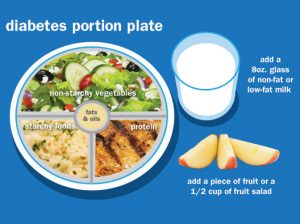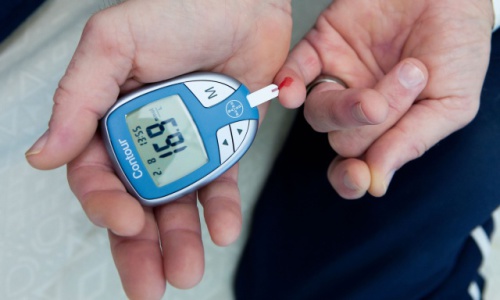Tired of trying to figure out how to lower blood sugar levels?
It’s okay. It’s normal. At some point in time everyone with diabetes needs more ideas, more hope and more help with how to lower glucose levels. I know. I’ve had diabetes for 33 years and am a seasoned diabetic educator and dietitian. And even this veteran sometimes needs help. (And yes, I too swear at my diabetes. See. You’re not alone.)
When my blood sugars change, how do I plod through the heaps of diabetic information to find the right method for how to lower blood sugars?
I use my diabetes blood tests strategically.
I target my efforts by using . . .
4 Steps
And I’ll explain these steps . . . right after this important paragraph!
DISCLAIMER: WWW.diabetes-blood-sugar-solutions.com is for informational and educational purposes only and not to be used as medical advice. By continuing past this notice you agree to the terms in the disclaimer. Thanks for keeping yourself safe!
Now, onward and forward:
It is my genuine hope that this site offers you:
Dozens of solutions for how to lower blood sugar when fasting or at lunch, supper, bedtime. Or even high sugars after meals. These are specific strategies that diabetes educators suggest to help you use food, exercise and even sleep to fix specific problem blood sugars.
Reasons to explain diabetic glucose levels.
Guidelines for blood sugar levels and the A1c blood test.
More confidence and less frustration.
Tips for picking the perfect blood sugar monitor.
Info on life-changing gadgets like insulin pumps.
A heaping amount of professional expertise not just from me, but from the gifted professionals I work with, on how to lower blood sugars and glycosylated hemoglobin; a drop of inspiration from success stories and a dash of eye of newt … oops! Got carried away there. Relax. No magic or perfection required.
And without further ado …
The 4 steps for:
How to Lower Blood Sugar
or “U-ACT”:
As an educator and diabetic I’ve known for years that it’s not just my knowledge of diabetes treatments and diabetes blood tests that determines my metabolic control. It’s how I fit these things into and around my priorities, my likes, my dislikes – MY LIFE.
Below are the steps I use with myself and with patients to help them do just that. To help them learn how to lower blood sugars.
They are not “MY” steps – I work with a great team of educators who utilize these same strategies. But really, it is you – the person with diabetes – who should claim the success for anything that works. After all, you are responsible for over 90% of your diabetes care and management. My only spin on this is that I’ve turned the steps into the acronym “U-ACT”. Hmmm. . .
U
– Understand what you could lose – LOTS!
A
– Analyze your hard earned data – easily!
C
– Choose solutions to fit YOUR life!
T
– Think it over, talk it over; Tailor it and Try again- this is a critical step!!! (or you’re bound for frustration)
1. “U” – Understand . . . yourself, your role and what you’ve got to lose in life … lots!
Growing up I knew a lovely lady who lost her vision to high sugars. She told me when she was younger she just didn’t consider what high blood glucose levels could do to her because she “felt fine”. I’m sure if she could, she’d tell you, “Don’t let feeling fine fool you”. It pays to learn how to lower blood sugar levels.
The research is clear. People with lower blood glucose levels values suffer fewer complications.
A 1% drop in average blood sugar level (A1c) lowers your chance of vision loss, kidney failure and nerve damage by 35-40% or more!
If you drop your A1c from 8% to 7% or even from 9% to 8% you benefit! So Yes – you want to know how to lower blood sugar levels!
Understand you get better results if you choose solutions for how to lower blood sugars that accommodate your priorities in life, your likes, dislikes, home and work responsibilities.
Understand your role is to communicate with your health care team what works for you in your life, what doesn’t, why it doesn’t and what your fears are. Your role is not (I repeat with capitals: NOT) to be perfect. How to lower blood sugars? Accept and communicate your limitations. You are human.
Let’s push aside the medical statistics. The most important reasons to have controlled sugars are the ones dearest to your heart.
What do you cherish in life that you don’t want to lose?
What dream don’t you want poor health to get in the way of?
Who do you love that you want to keep on loving, keep on seeing, keep on holding?
These are your real reasons for wanting good blood glucose control!
For me, my reason is my daughter. Watching her grow more beautiful and witty; delighting in the dimples on her contagious grin; cuddling her each night as we share our thoughts at bedtime.…
 constantly carrying out research on diabetes and the methods that can be used for treating this condition in human beings. However, exercise and diet are the two best treatments for diabetes. Health experts and professionals recommend performing minimum 150 minutes of aerobic
constantly carrying out research on diabetes and the methods that can be used for treating this condition in human beings. However, exercise and diet are the two best treatments for diabetes. Health experts and professionals recommend performing minimum 150 minutes of aerobic exercises of moderate intensity for staying healthy. Nevertheless, there is more exercise needed for managing diabetic conditions.
exercises of moderate intensity for staying healthy. Nevertheless, there is more exercise needed for managing diabetic conditions.



 Insulin resistance is one of the most common mechanisms for the growth of diabetes. Insulin resistance is resistance of the bodily tissues to insulin actions. Insulin is basically a hormone released by the pancreas and it is responsible for pushing glucose absorbed from food into cells for providing them with proper energy. In case the cells turn insulin resistant, they are not able to obtain the glucose needed for functioning in a normal manner. It is clearly evident from clinical studies that different types of aerobic exercises have the potential of improving insulin sensitivity in individuals suffering from diabetes. These exercises are not only the ones that fall in the category of moderate intensity exercises but also the mild intensity workouts that have a good influence on blood sugars. It has been provided through research that a single session of exercise can help in improving and enhancing insulin sensitivity for around 72 hours. Therefore, it is quite important for diabetes sufferers to maintain a positive effect by engaging in aerobic exercises on a regular basis.
Insulin resistance is one of the most common mechanisms for the growth of diabetes. Insulin resistance is resistance of the bodily tissues to insulin actions. Insulin is basically a hormone released by the pancreas and it is responsible for pushing glucose absorbed from food into cells for providing them with proper energy. In case the cells turn insulin resistant, they are not able to obtain the glucose needed for functioning in a normal manner. It is clearly evident from clinical studies that different types of aerobic exercises have the potential of improving insulin sensitivity in individuals suffering from diabetes. These exercises are not only the ones that fall in the category of moderate intensity exercises but also the mild intensity workouts that have a good influence on blood sugars. It has been provided through research that a single session of exercise can help in improving and enhancing insulin sensitivity for around 72 hours. Therefore, it is quite important for diabetes sufferers to maintain a positive effect by engaging in aerobic exercises on a regular basis.
